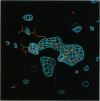Abstract
The elucidation of how a protein-binding site might specifically recognize both the all-trans and 9-cis isomers of retinoic acid is of particular interest because of the recently discovered binding specificities of the nuclear receptors for retinoic acid. Two families of nuclear receptors for retinoic acid have been described, which are designated RAR (for retinoic acid receptor) and RXR (for retinoid-X receptor). The RXR family of receptors is specific for 9-cis-retinoic acid, whereas the RAR-type receptor is activated by either 9-cis- or all-trans-retinoic acid. During the x-ray structure determination of a secreted epididymal retinoic acid-binding protein, with and without retinoic acid, we observed an electron density for the bound all-trans-retinoic acid that indicates the protein-bound all-trans form of the vitamin/hormone adopts a horseshoe-like conformation that resembles the structure of the 9-cis isomer of the ligand. We detail here the experiments that indicate the electron density is indeed due to all-trans-retinoic acid and that protein can also bind the 9-cis isomer. This observation and the fact that the same protein also binds the synthetic retinoid (E)-4-[2-(5,6,7,8-tetrahydro-5,5,8,8-tetramethyl-2-naphthalenyl)-1- propenyl]-benzoic acid (TTNPB), a retinoic acid analog that activates RAR but does not activate RXR, suggest that the mechanism by which this protein recognizes both 9-cis- and all-trans-retinoic acids may be analogous to the mechanism used by RAR. Three crystallographic structures of retinol-binding proteins have been described. In each of these structures the retinol binds with the isoprene tail fully extended. This report represents an x-ray crystallographic description of a protein-bound retinoid conformer that adopts a nonextended conformation, and we believe this observation is relevant to the ligand specificities described for the retinoic acid receptors.
Full text
PDF
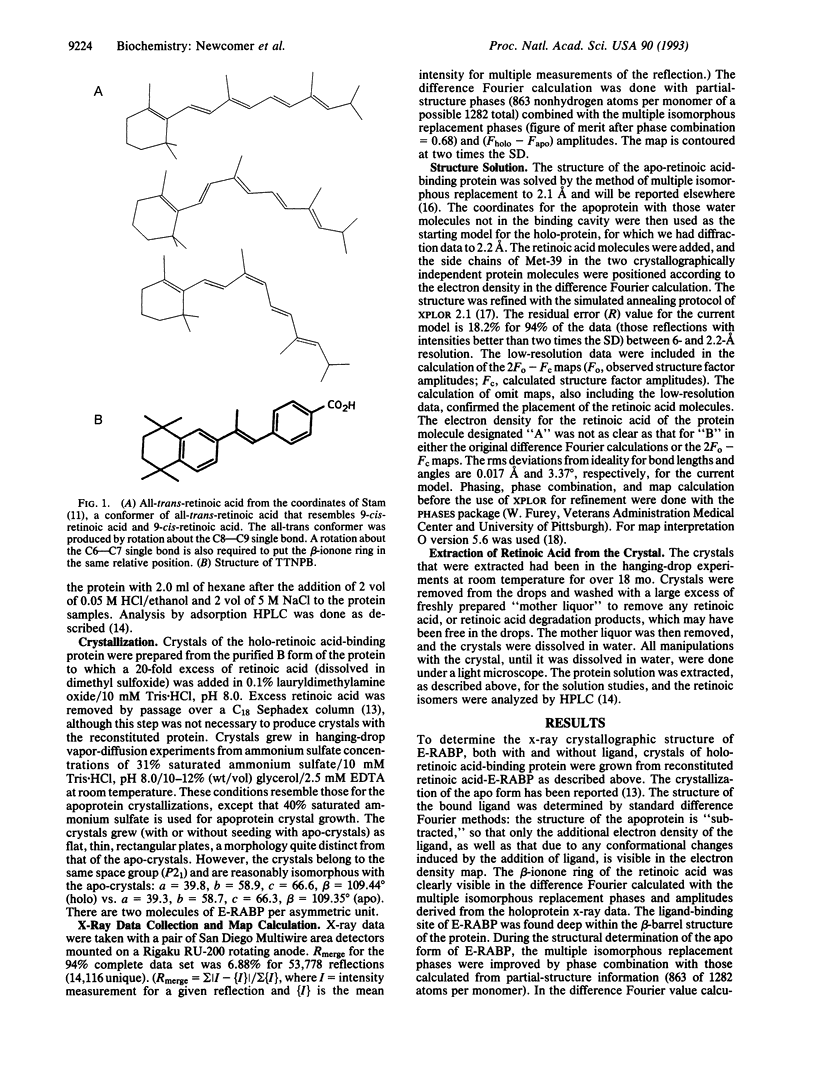
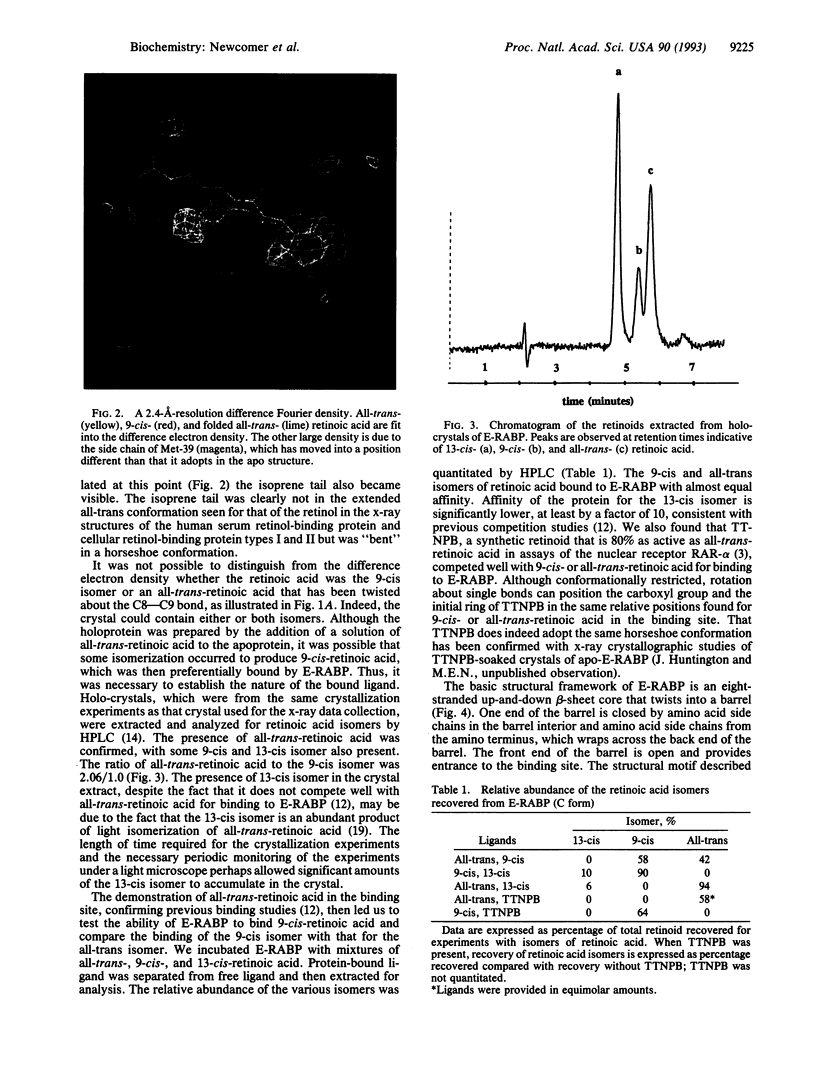
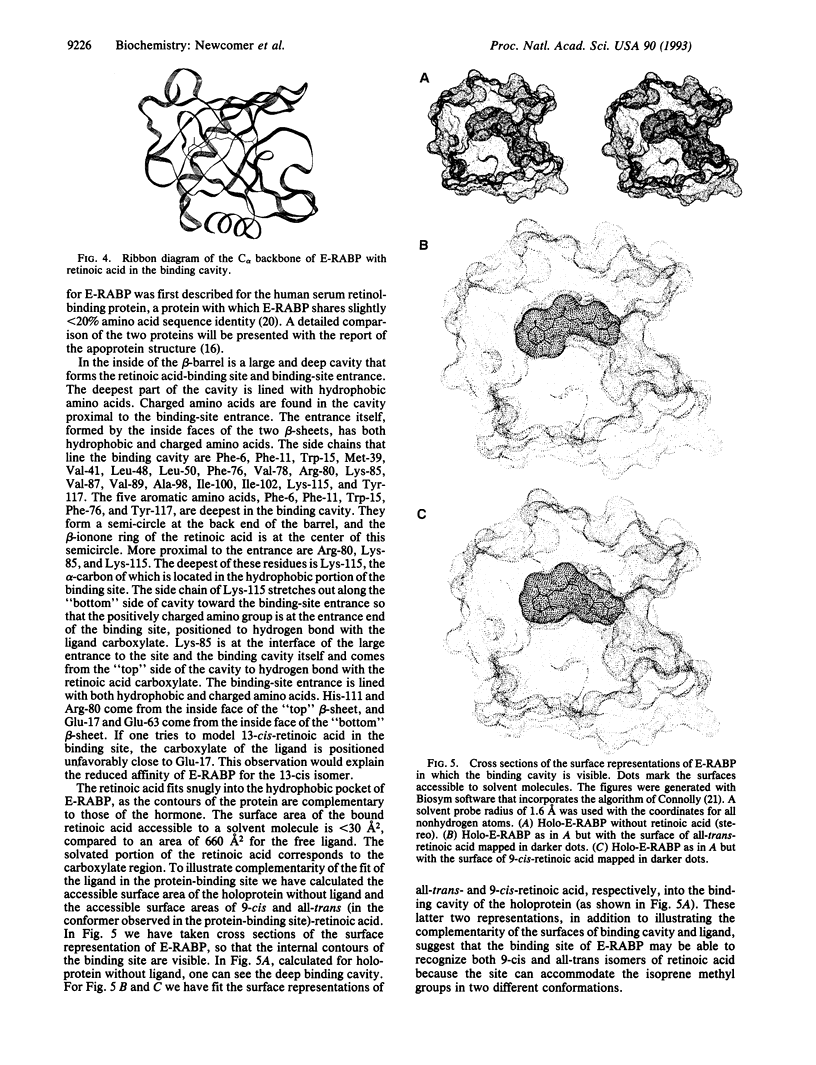
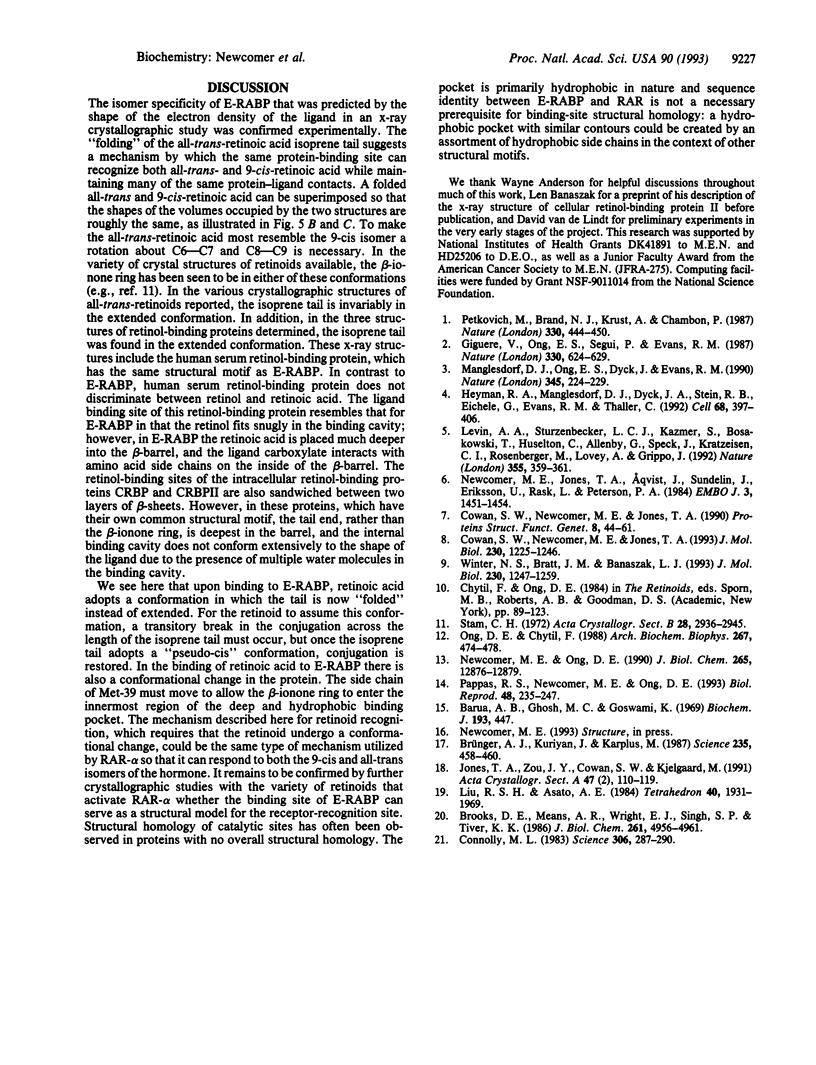
Images in this article
Selected References
These references are in PubMed. This may not be the complete list of references from this article.
- Barua A. B., Ghosh M. C., Goswami K. Oxidative esterification of retinal and 3-dehydroretinal to methyl esters of retinoic acid and 3-dehydroretinoic acid. Biochem J. 1969 Jun;113(2):447–447. doi: 10.1042/bj1130447. [DOI] [PMC free article] [PubMed] [Google Scholar]
- Brooks D. E., Means A. R., Wright E. J., Singh S. P., Tiver K. K. Molecular cloning of the cDNA for two major androgen-dependent secretory proteins of 18.5 kilodaltons synthesized by the rat epididymis. J Biol Chem. 1986 Apr 15;261(11):4956–4961. [PubMed] [Google Scholar]
- Brünger A. T., Kuriyan J., Karplus M. Crystallographic R factor refinement by molecular dynamics. Science. 1987 Jan 23;235(4787):458–460. doi: 10.1126/science.235.4787.458. [DOI] [PubMed] [Google Scholar]
- Cowan S. W., Newcomer M. E., Jones T. A. Crystallographic refinement of human serum retinol binding protein at 2A resolution. Proteins. 1990;8(1):44–61. doi: 10.1002/prot.340080108. [DOI] [PubMed] [Google Scholar]
- Cowan S. W., Newcomer M. E., Jones T. A. Crystallographic studies on a family of cellular lipophilic transport proteins. Refinement of P2 myelin protein and the structure determination and refinement of cellular retinol-binding protein in complex with all-trans-retinol. J Mol Biol. 1993 Apr 20;230(4):1225–1246. doi: 10.1006/jmbi.1993.1238. [DOI] [PubMed] [Google Scholar]
- Giguere V., Ong E. S., Segui P., Evans R. M. Identification of a receptor for the morphogen retinoic acid. Nature. 1987 Dec 17;330(6149):624–629. doi: 10.1038/330624a0. [DOI] [PubMed] [Google Scholar]
- Heyman R. A., Mangelsdorf D. J., Dyck J. A., Stein R. B., Eichele G., Evans R. M., Thaller C. 9-cis retinoic acid is a high affinity ligand for the retinoid X receptor. Cell. 1992 Jan 24;68(2):397–406. doi: 10.1016/0092-8674(92)90479-v. [DOI] [PubMed] [Google Scholar]
- Jones T. A., Zou J. Y., Cowan S. W., Kjeldgaard M. Improved methods for building protein models in electron density maps and the location of errors in these models. Acta Crystallogr A. 1991 Mar 1;47(Pt 2):110–119. doi: 10.1107/s0108767390010224. [DOI] [PubMed] [Google Scholar]
- Levin A. A., Sturzenbecker L. J., Kazmer S., Bosakowski T., Huselton C., Allenby G., Speck J., Kratzeisen C., Rosenberger M., Lovey A. 9-cis retinoic acid stereoisomer binds and activates the nuclear receptor RXR alpha. Nature. 1992 Jan 23;355(6358):359–361. doi: 10.1038/355359a0. [DOI] [PubMed] [Google Scholar]
- Mangelsdorf D. J., Ong E. S., Dyck J. A., Evans R. M. Nuclear receptor that identifies a novel retinoic acid response pathway. Nature. 1990 May 17;345(6272):224–229. doi: 10.1038/345224a0. [DOI] [PubMed] [Google Scholar]
- Newcomer M. E., Jones T. A., Aqvist J., Sundelin J., Eriksson U., Rask L., Peterson P. A. The three-dimensional structure of retinol-binding protein. EMBO J. 1984 Jul;3(7):1451–1454. doi: 10.1002/j.1460-2075.1984.tb01995.x. [DOI] [PMC free article] [PubMed] [Google Scholar]
- Newcomer M. E., Ong D. E. Purification and crystallization of a retinoic acid-binding protein from rat epididymis. Identity with the major androgen-dependent epididymal proteins. J Biol Chem. 1990 Aug 5;265(22):12876–12879. [PubMed] [Google Scholar]
- Ong D. E., Chytil F. Presence of novel retinoic acid-binding proteins in the lumen of rat epididymis. Arch Biochem Biophys. 1988 Dec;267(2):474–478. doi: 10.1016/0003-9861(88)90053-7. [DOI] [PubMed] [Google Scholar]
- Pappas R. S., Newcomer M. E., Ong D. E. Endogenous retinoids in rat epididymal tissue and rat and human spermatozoa. Biol Reprod. 1993 Feb;48(2):235–247. doi: 10.1095/biolreprod48.2.235. [DOI] [PubMed] [Google Scholar]
- Petkovich M., Brand N. J., Krust A., Chambon P. A human retinoic acid receptor which belongs to the family of nuclear receptors. Nature. 1987 Dec 3;330(6147):444–450. doi: 10.1038/330444a0. [DOI] [PubMed] [Google Scholar]
- Winter N. S., Bratt J. M., Banaszak L. J. Crystal structures of holo and apo-cellular retinol-binding protein II. J Mol Biol. 1993 Apr 20;230(4):1247–1259. doi: 10.1006/jmbi.1993.1239. [DOI] [PubMed] [Google Scholar]



